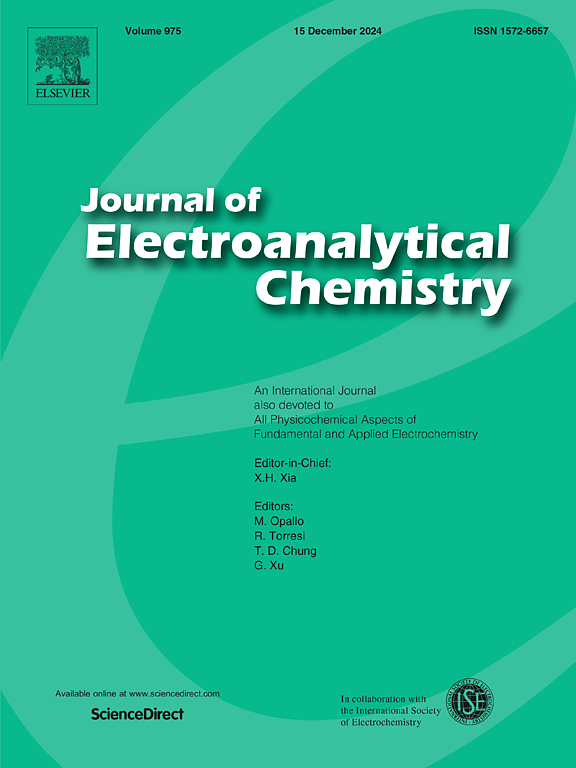Unlocking solar potential: Taguchi-optimized idiosyncratic passivation for carbon-based perovskite solar cells
IF 4.1
3区 化学
Q1 CHEMISTRY, ANALYTICAL
引用次数: 0
Abstract
This study is focused on unlocking solar potential by Taguchi-optimized idiosyncratic passivation for Carbon-Based Perovskite Solar Cell devices (PSCs). Perovskite solar cell technology is considered a thin-film photovoltaic technology. The systematic Taguchi method is utilized to optimize four imperative fabrication parameters: electron transport layer (ETL) type, perovskite absorber layer composition, hole transport layer (HTL) type, and perovskite layer annealing temperature. In addition, Idiosyncratic passivating materials are explored in the present study with the anticipation of achieving extraordinary efficiency and stability. Furthermore, a novel methodology of incorporating a synergistic integration of a zirconium-based metal-organic framework (MOF) as well as inorganic nanoparticles unswervingly into the perovskite layer alongside a mixed cationic perovskite composition (FA0.55MA0.25Cs0.2PbI3) is introduced for passivation. Through a series of carefully designed experiments, we identified the optimal fabrication conditions to maximize power conversion efficiency (PCE). After appropriate validation, the champion device (fabricated with the optimal parameters) yielded promising results, with an open-circuit voltage (VOC) of 0.74 V, a short-circuit current density (JSC) of 21.8 mA/cm2, a fill factor (FF) of 0.76, and a power conversion efficiency (PCE) of 12.26 %. Conspicuously, the synergistic effect of the chosen passivating additives holds significant potential for advancing the commercialization of low-cost PSCs, particularly in applications where large-area devices are required. Thus, this work institutes a robust and reproducible protocol for fabricating high-performance, low-cost carbon-based PSCs demonstrating boosted performance and reproducibility.

释放太阳能潜力:田口优化的碳基钙钛矿太阳能电池的特殊钝化
这项研究的重点是通过田口优化的碳基钙钛矿太阳能电池器件(PSCs)的特异性钝化来释放太阳能潜力。钙钛矿太阳能电池技术被认为是一种薄膜光伏技术。利用系统的田口方法优化了电子输运层(ETL)类型、钙钛矿吸收层组成、空穴输运层(HTL)类型和钙钛矿层退火温度四个重要的制备参数。此外,本研究还探索了特殊钝化材料,以期达到非凡的效率和稳定性。此外,介绍了一种新的方法,将锆基金属有机框架(MOF)和无机纳米颗粒协同整合到钙钛矿层中,并与混合阳离子钙钛矿组合物(FA0.55MA0.25Cs0.2PbI3)一起进行钝化。通过一系列精心设计的实验,我们确定了最大化功率转换效率(PCE)的最佳制造条件。经过适当的验证,冠军器件(以最佳参数制作)取得了令人满意的结果,开路电压(VOC)为0.74 V,短路电流密度(JSC)为21.8 mA/cm2,填充因子(FF)为0.76,功率转换效率(PCE)为12.26%。值得注意的是,所选择的钝化添加剂的协同效应对于推进低成本psc的商业化具有巨大的潜力,特别是在需要大面积器件的应用中。因此,这项工作为制造高性能、低成本的碳基psc提供了一个强大的、可重复的协议,证明了高性能和可重复性。
本文章由计算机程序翻译,如有差异,请以英文原文为准。
求助全文
约1分钟内获得全文
求助全文
来源期刊
CiteScore
7.80
自引率
6.70%
发文量
912
审稿时长
2.4 months
期刊介绍:
The Journal of Electroanalytical Chemistry is the foremost international journal devoted to the interdisciplinary subject of electrochemistry in all its aspects, theoretical as well as applied.
Electrochemistry is a wide ranging area that is in a state of continuous evolution. Rather than compiling a long list of topics covered by the Journal, the editors would like to draw particular attention to the key issues of novelty, topicality and quality. Papers should present new and interesting electrochemical science in a way that is accessible to the reader. The presentation and discussion should be at a level that is consistent with the international status of the Journal. Reports describing the application of well-established techniques to problems that are essentially technical will not be accepted. Similarly, papers that report observations but fail to provide adequate interpretation will be rejected by the Editors. Papers dealing with technical electrochemistry should be submitted to other specialist journals unless the authors can show that their work provides substantially new insights into electrochemical processes.

 求助内容:
求助内容: 应助结果提醒方式:
应助结果提醒方式:


